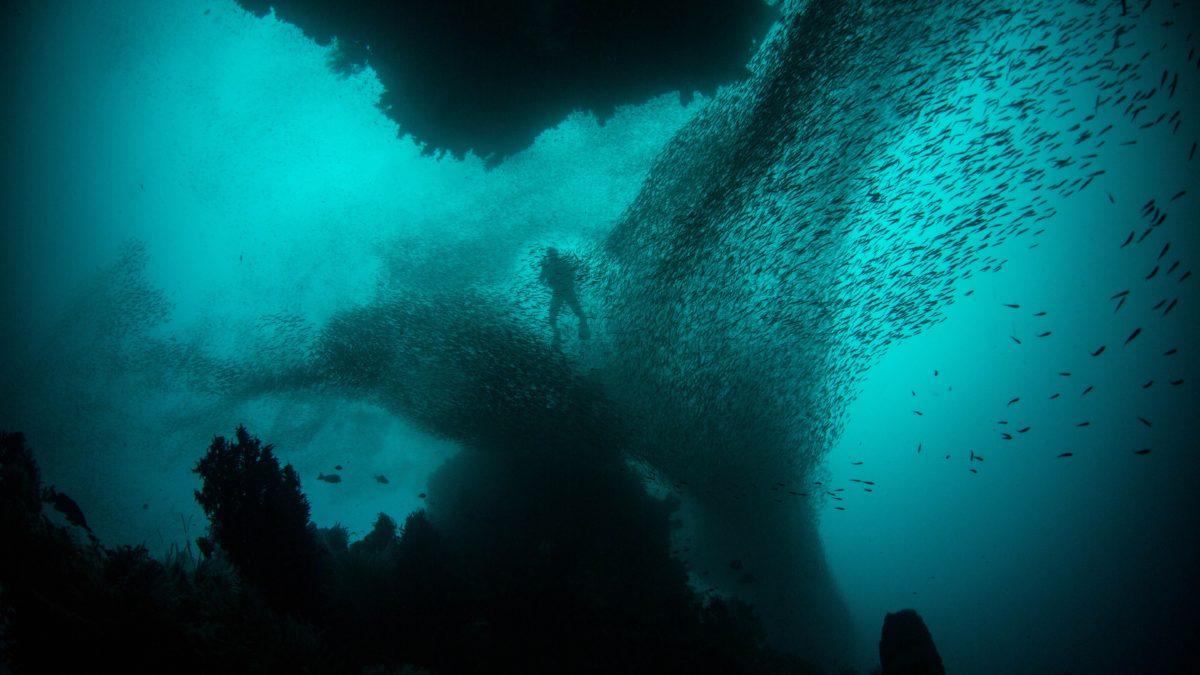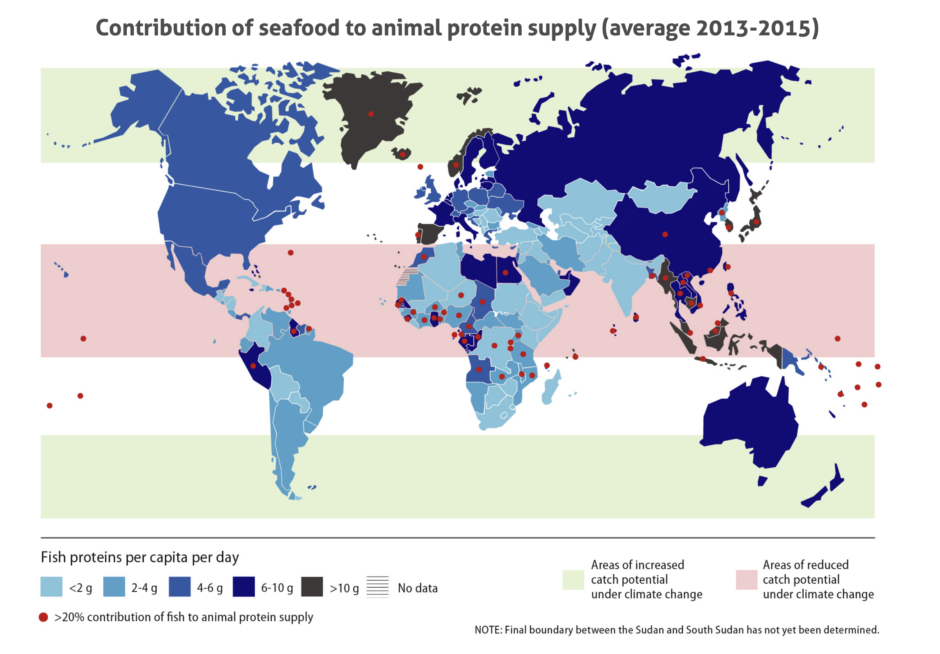
This is an op-ed by Gunhild A Stordalen, Founder and Executive Chair, EAT, and member of Friends of Ocean Action. It first appeared on the World Economic Forum.
In the face of growing concern over the environmental and health costs of land-based food production, it’s high time to put a spotlight on the role that the ocean and blue food can play in the wider food systems transformation.
The EAT-Lancet Commission on Healthy Diets from Sustainable Food Systems calls for a shift away from high-impact animal proteins, such as red meat, in order to healthily and sustainably feed the planet’s growing population. An increase in blue food consumption is a key part of a healthy food future – but we need much more clarity on how to achieve this while staying within the boundaries of what the planet can sustainably produce. Sustainably scaling blue food could unlock huge health, environmental and economic opportunities – including job creation and improved livelihoods. It also provides a unique chance to counter some of the most urgent challenges facing our ocean.
Blue food – that is, all edible marine and freshwater organisms, including fish, shellfish and algae, whether wild caught or from aquaculture – is the cornerstone of around 3 billion people’s diets today, and will likely be a much more important part of all our diets tomorrow. It is a key source of protein and essential micronutrients and has been linked to a reduced risk of non-communicable diseases such as type-2 diabetes. Yet blue food is greatly under-utilized and under-researched as part of holistic food-based nutrition interventions. Increasing the access and availability of blue food, notably nutrient-rich small fish, to the more than 2 billion people currently lacking key micronutrients in their diets would help reverse the rising trend in global malnutrition, with significant social and economic benefits.
A singular focus on the growth potential and major health benefits of blue food only shows one side of the coin, however. On the flipside, we know that overfishing, growing contamination of coastal areas, and the alarming rates of climate change and ocean acidification are putting the ocean under unprecedented strain.
Blue food could have a huge role to play in feeding the planet sustainably and healthily.
To release some of these pressures, many are looking to aquaculture to play an increasingly prominent role in local and global food systems. As we examine this rapidly growing industry, however, we realize that the environmental boundaries of aquaculture are largely unknown. We generally understand that the environmental footprints of fish and shellfish are considerably lower than for red meat, but that these impacts can vary significantly depending on species and production practices. Think of salmon fed with soy from tropical regions, for example, with the potential attendant emissions from transportation and even deforestation. A sustainable increase in aquaculture production urgently requires clarity on the impacts of different production practices on planetary boundaries – including a focus on feed, production systems, species and diseases.
While a deep dive into the blue food realm paints a complex picture, we owe it to both people and planet not to repeat the errors made in terrestrial food production. Before going too far, we have to ask: can blue food really help meet the nutritional needs of 10 billion people while helping bring food production within sustainable planetary boundaries?
A recent report on the Future of Food from the Sea, commissioned by the High Level Panel for a Sustainable Ocean Economy, gives us the knowledge that it can – with the caveat that how we capture and produce blue food makes all the difference. Fulfilling the potential for increased blue food production will require reforming capture fisheries, the establishment and enforcement of strict conservation limits, and the expansion of sustainable aquaculture – for instance through an increased focus on unfed species such as mussels.
To fill urgent knowledge gaps, a scientific assessment of the role of blue food in the future of healthy, sustainable and equitable food systems is currently being carried out by the Stanford University Center for Ocean Solutions and Stockholm Resilience Centre, in partnership with EAT and Friends of Ocean Action. Complementing the EAT-Lancet report, this Blue Food Assessment will expand on existing science to systematically consider the environmental, nutritional and social justice impacts of integrating blue food into healthy and sustainable food systems.
As we turn to the oceans, we must not repeat the mistakes we have made in land-based food production.
Knowledge is just one piece of the food systems transformation puzzle, however. Securing and restoring the health of aquatic ecosystems while increasing the production of healthy foods for a growing population requires action – now. A cross-sectoral and holistic approach to blue food production is key – one that recognizes blue food as an integrated component of the overall global food system, not siloed from land-based agriculture.

Land-based and aquatic food production systems are intrinsically interconnected: from highly polluted rivers and streams driving algal blooms in coastal areas to the fishmeal used in animal feeds. Governments, businesses, scientists, civil society and citizens need to act and develop solutions built on a deep understanding of these interconnections.
Blue food should be included in national food policies, recognizing its important role in food and nutrition security – contributing to livelihoods as well as human health. Ministries responsible for fisheries, health and trade should be working together to ensure that policies relating to blue food are aligned. The long-term sustainability of capture fisheries is critically dependent on better governance, including eliminating overfishing, illegal, unregulated, and unreported fishing, and harmful subsidies. The High Level Panel report finds that if well protected, capture fisheries could produce as much as 20% more catch compared to today.
The necessary transformation will require significant investment and cooperation across sectors and countries. Therefore, Friends of Ocean Action, together with EAT and other partners, are developing a multi-stakeholder Blue Food Coalition designed to stimulate innovation and change in policies and business practices related to aquatic food production.
The transition to sustainability will require collaboration across sectors and countries.
While blue food represents an opportunity to increase food production for a growing population, aquatic systems are already being pushed beyond environmental limits. We must not repeat the errors of the green revolution, by purely focusing on increased calorific production without paying sufficient attention to environmental costs and human nutrition. Greater alignment and collaboration across science, civil society, public and private sectors are going to be essential factors in securing a thriving future for our blue planet, and its people.